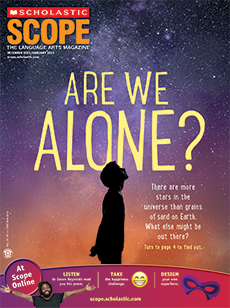Mary Kang
Kaavya Yalamanchili, Laya’s sister, is working on getting HydroAlert installed across Texas—and beyond.
Scope: What inspired you to make HydroAlert?
Laya Yalamanchili: In 2016, a truck was swept away at a low-water crossing in our neighborhood in Austin, Texas, and the driver drowned. We felt a great amount of grief. We wanted to develop a system to prevent these tragedies.
Scope: What is a low-water crossing?
Kaavya Yalamanchili: A low-water crossing is a road above a water source, such as a stream or river. A low-water crossing provides a bridge for cars to drive over. When water levels are high, like during a flood, water runs over the bridge.
Scope: Why are they dangerous?
Satvik Dasari: It takes only about 18 inches of water to lift a car and sweep it away. It can be hard to judge the height of the water on the road, especially at night. So most people underestimate the power of the water and cross the bridge rather than turn around.
Scope: How did you come up with the idea for HydroAlert?
Laya: We did research and found that most low-water crossings do not have automated systems to measure water levels because those systems are expensive. We decided to develop a low-cost system that could automatically measure water levels and alert drivers about floods.
Scope: How does the system work?
Satvik: The system consists of three main components: a sensor that measures the water level, a device that receives the water level data and determines if the road is safe to cross or not, and an app that sends safety alerts to users.

